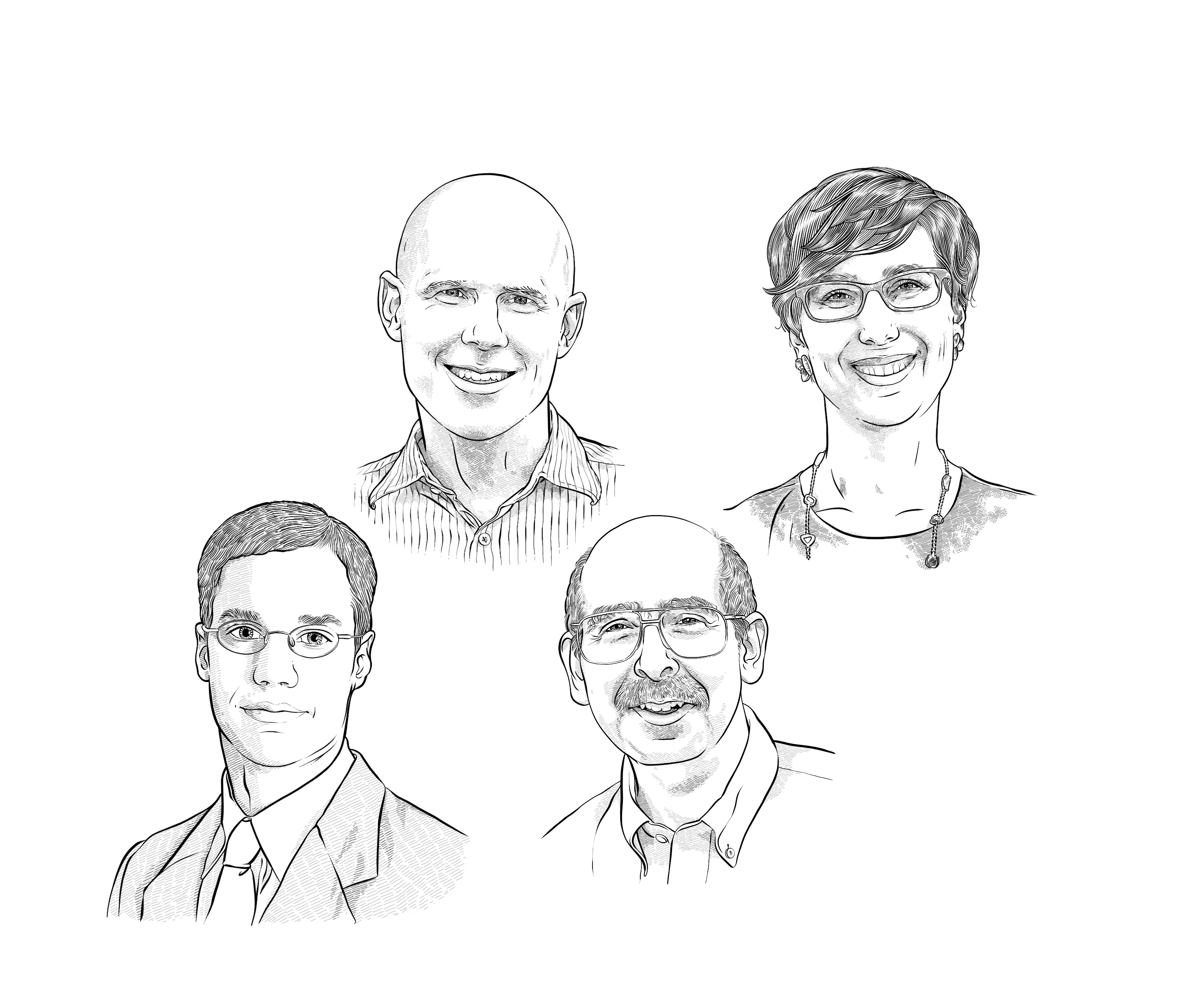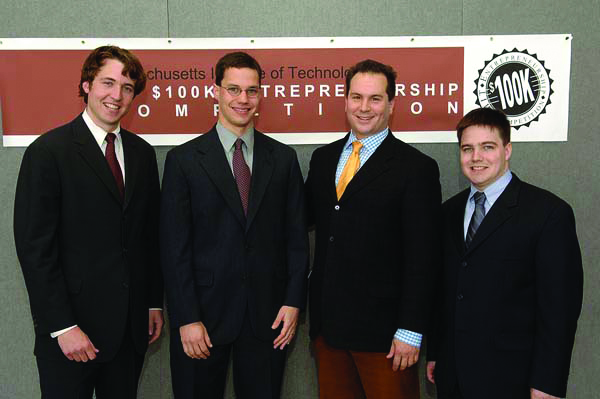Alumni Recount Pivotal Career Moments in New Book of Essays
-
-
Slice of MIT
Filed Under
Recommended

When Daniel Goodman PhD ’89 first conceived of the book that became Find Your Path: Unconventional Lessons from 36 Leading Scientists and Engineers (MIT Press, December 2019), his intent was to provide career guidance to students. But as the project progressed, Goodman writes in his introduction to the volume, “I realized that through their first-person stories our role-model scientists and engineers are actually providing valuable life guidance for readers at any stage in their career.”
Find Your Path includes Goodman’s own story, recounting how he went from studying plasma physics at MIT to his current role as director of advanced technology at ASM-NEXX in Massachusetts (as well as a director of the Fannie and John Hertz Foundation, which provides graduate fellowships in applied science, and helped inspire the book project). The collection also contains chapters based on Goodman’s interviews with six other MIT alumni:
- Stephen D. Fantone ’74, founder and president of Optikos Corporation and a senior lecturer in the MIT Department of Mechanical Engineering
- Richard Lethin SM ’91, PhD ’97, president of Reservoir Labs Inc. and adjunct professor at Yale University
- Christopher Loose PhD ’07, cofounder of Semprus BioSciences and Frequency Therapeutics (currently chief scientific officer of the latter) and executive director of Yale University’s Center for Biomedical and Interventional Technology
- Jennifer Roberts SM ’06, PhD ’10, deputy director of the Information Innovation Office of the Defense Advanced Research Projects Agency
- Daniel A. Theobald ’95, SM ’98, cofounder and chief innovation officer of Vecna Technologies Inc.
- Rainer Weiss ’55, PhD ’62, Nobel laureate and MIT physics professor emeritus
As Goodman writes, “Although their challenges vary from subject to subject, one commonality is the love these role models have for scientific discovery and their desire to use science and technology to understand and improve the world.”
In the following brief excerpts from Find Your Path, Roberts, Theobald, and Loose reflect on key elements of their own trajectories: focusing academic research, finding mentors, and raising funds for a first startup.
Jennifer Roberts SM ’06, PhD ’10: Graduate Research
At MIT, I first worked on systems to improve cardiovascular monitoring in a group at the Research Laboratory of Electronics. I was coadvised by George Verghese and Thomas Heldt [PhD ’04], both of whom were excellent teachers and mentors.
It took me some time to understand the academic approach to solving practical technical problems. I prefer to start by understanding the big picture, identifying the most important problem, and then developing impactful solutions. For example, in cardiovascular monitoring, false alarms are a big problem. False alarms distract nurses, leading them to distrust equipment. When I learned about false alarms, my approach was to research methods to best solve the problem.
In academia, however, research often works in the opposite direction. Research groups aim to apply their particular specialties to whatever issues their techniques might address. George Verghese had a mathematical background, and so our group worked to apply a particular type of mathematics to cardiovascular monitoring. Although this approach never felt natural to me, I came to understand the reasons for it later, when I realized that deep specialization is often required for obtaining research grants as one gains a reputation as an expert in certain types of problems.
After completing a master’s thesis in Bayesian methods for cardiovascular monitoring, I decided to do my PhD project in Patrick Winston’s group working on computational cognitive science. Patrick [’65, SM ’67, PhD ’70] had written one of the seminal books on artificial intelligence (AI) and led the MIT AI Lab for many years. He also had a very broad perspective that proved helpful to me. When I gave one of my early presentations to the group in which I had laid out plans for a thesis project, the other students said that my approach was wrong and too ambitious. But Patrick looked at my work and announced to the group, “Jennifer has just defined a research program.” I was fortunate that he had a broad enough understanding of the research landscape to recognize the worth of my presentation, even if it was too sweeping for a single student’s thesis project.
For my PhD work, I studied “cognitively inspired AI,” a name we coined for algorithms that would capture types of human learning that contemporary algorithms could not address. My research focused on learning techniques that combined multiple representations. Experts in physics and math have many different representations and switch back and forth between them to simplify problems. For example, in high-energy physics the Feynman diagram simplifies calculations that were previously intractable. I studied how computers might exploit pairs of representations in order to make solutions easier to identify by using a computationally superior representation to illuminate patterns in a representation that was more easily observed.
The Hertz Foundation supported me through five years of graduate school. In my last year, I won a Google scholarship that paid for me to attend the Grace Hopper Celebration for women in engineering at the Anita Borg Institute. The conference is the world’s largest gathering of women technologists, designed to highlight the research and career interests of women in computing. It was amazing. Women from around the world were interested not only in creating cool algorithms or making computation faster but also in using computer science to make the world a better place. The conference focused on mentoring and empowering women at all stages in their careers. I appreciated spending time with so many women interested in having a positive impact.
Daniel Theobald ’95, SM ’98: Finding Mentors
“You already have a successful company, a wonderful wife and kids,” my adviser said. “Why exactly do you need to get a PhD?” Between raising two kids at home, working at a growing startup, and studying to pass the MIT mechanical engineering qualifying exam after a six-year break from school, I was completely fatigued. All of it was more than any one person could do.
My wife, Deborah [Theobald ’95], and I had moved to Maryland in 1999 when the MIT Space Systems Laboratory was relocated to the University of Maryland. While she finished her master’s degree, we founded VECNA on $5,000 from our bank account. A couple of pieces of advice for graduate students—if you have the intention of getting a PhD, it’s good to get your qualifying exams over before you take time off. But, more important, you should do what you are passionate about. Some believe in suffering for years in a PhD program to reach a career goal. I believe that happiness and fulfillment should be one of your major career goals. Another major goal should be to see how much good you can do in the world….
One of my failings over the years has been not to seek out really good mentors. But during my student years, I had two mentors whom I remember. Professor Rohan Abeyaratne, an expert in mechanics and materials, was my undergraduate adviser at MIT. I also learned a great deal from Professor Woodie Flowers [SM ’68, ME ’71, PhD ’73], with whom I worked on my mechanical engineering Capstone (thesis) project. Professor Flowers taught engineering design and product development and was an early robotics pioneer. I remember in the design-projects class, he told us that we were not allowed to do any welding— an MIT fire-safety rule because it was just too dangerous. Then he said, “Therefore we must close the door,” and taught us how to weld. Woodie had an intuitive sense for materials, energy, and batteries and passed that along to me. He would ask us fundamental questions such as, “Do you understand how an internal-combustion engine really works?”
There was not a great deal of mathematical rigor in my independent-study program. I suffered through the math in my undergraduate and graduate courses. It was not by plugging numbers into equations but through hands-on trying, touching, and building that I gained an intuitive understanding of systems. I think through problems by writing out a description and solution in prose, longhand—this is how the system will develop. My professors liked that approach, and it has helped me—it is how I lead my teams on engineering projects today.
Christopher Loose PhD ’07: Envisioning a Company
My first startup was a medical device company called Semprus BioSciences. We developed vascular catheters with a surface modification designed to help reduce clot formation. From that experience, I learned the power of partnering and teamwork and how long it takes to grow a company from idea stage through development and finally acquisition….

Although David [Lucchino MBA ’06] and I wanted to create a medical device company, the first challenge we faced was that neither of us had touched, let alone worked with, a medical device in our lives. We needed help from someone with experience building and selling catheters. On a whim, David dropped by a medical device regulatory conference and learned that a leading antimicrobial catheter company was downsizing and laying off experienced staff. David met Greg Haas, who had been developing catheter products for more than 20 years. Greg taught us about device manufacturing, the regulatory process, and the questions we should expect from potential commercial partners.
David and I wrote a preliminary business plan and decided to enter it into the MIT $100K Entrepreneurship Competition. Win or lose, we knew that competing would help us make additional connections and improve our plan. The spring of 2006 was very busy as I continued research in the lab, started to write my dissertation, and prepared for the competition. After getting feedback from dozens of great advisers, we won the top prize in the competition. This gave us $30,000 [Editor’s note: At that time, the competition split $100,000 in prize money among multiple teams] and some confidence that our startup, SteriCoat (later renamed Semprus BioSciences), was heading in the right direction. One adviser joked that our early business model was to apply to every business-plan competition in the world with open admission: We had also entered competitions at Harvard, Oxford, Princeton, Cambridge, and Rice Universities, accumulating about $100,000 in funding.
The next step for our venture was pursuing angel funding from affluent individuals. Recognizing that taking private investments is a very large responsibility, we held off for six months while we made sure that we had sufficient intellectual-property protection and recruited the rest of our team. I also worked overtime to finish my thesis in order to graduate in the spring of 2007.
A big break with private investors came at a meeting with Harvard Business School professors who sometimes support early-stage companies. As we were halfway through our first pitch, one professor leaned back and said, “I’ll put in $50,000.” Without missing a beat, David audaciously replied that we were actually looking for $100,000 checks. As I watched in amazement, the professor quickly agreed. We then met with the professor’s friends and a few others and raised $1 million in startup funds within a couple of months. After raising private funds, we met with venture-capitalist firms, quickly proceeded through due diligence and added an additional $1 million in July. How good times were in 2007….
Excerpted text from Find Your Path: Unconventional Lessons from 36 Leading Scientists and Engineers (editor, Daniel Goodman), published by MIT Press in 2019. Copyright: MIT Press. All rights reserved.
Illustration at top, depicted from left: Loose, Theobald, Goodman, Roberts







